What You Should Know About Driving Through Flooded Streets
Flooding kills more drivers than any weather hazard. When every street turns into a river, even an ordinary drive can become deadly.
Why Driving Through Flooded Streets Turns Deadly
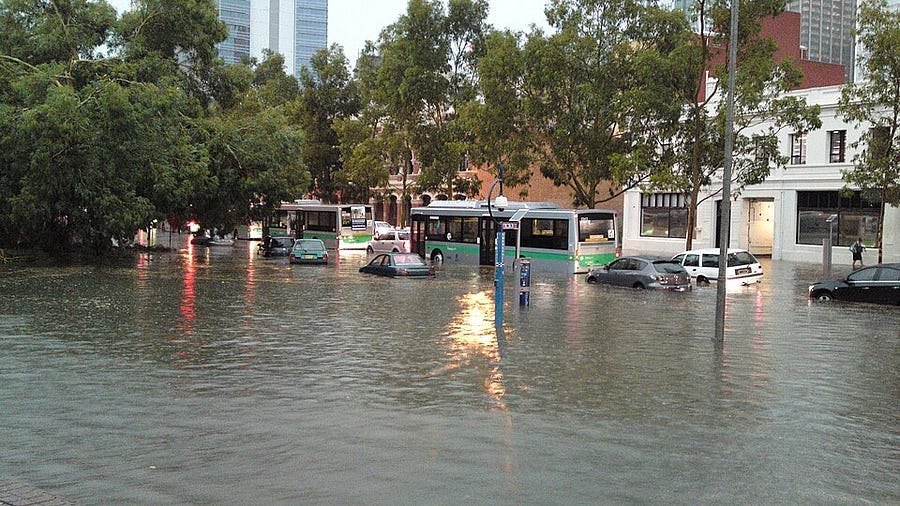
Every heavy rainstorm leaves behind tragic, familiar images: cars stranded in rising water, drivers waiting on rooftops, and first responders risking their lives. On average, flooding is the deadliest weather hazard in the U.S and the danger is greatest on the roads. According to Disaster Philanthropy at least 166 people have died in U.S. floods as of November 30, 2024, with the majority of deaths occurring while driving. Over half of all flood-related fatalities happen when someone drives or walks into floodwaters.
Geography sets the stage: low-lying roads, drainage systems pushed past capacity, and deceptively shallow flows that hide currents and sinkholes. Our cities rely on aging storm drains and culverts built for historical rainfall patterns, not the intense, localized downpours becoming more common with climate change. When those systems fail, streets can become rivers within minutes — a reminder of how fragile our built environment is under stress.
And when drivers gamble with floodwaters, stalled vehicles endanger not only passengers but also first responders and evacuation routes.
The safest — and most resilient — choice is also the simplest: Turn Around, Don’t Drown®. More than a slogan, it’s a survival strategy rooted in the physics of water, force, and vehicles.
Here are the key things you need to know to understand why turning around isn’t just smart advice — it’s survival.
What Happens if You Walk or Drive Through Six Inches (15 cm) of Water

The most dangerous floods are often the ones you don’t see coming — especially on roads we use every day. Floodwater can rush in from overflowing creeks, ditches, or storm drains. Standing water deceives: buoyancy lifts cars while gravity pulls them downstream. Just six inches of moving water can knock an adult off their feet, sweeping them into culverts or deeper currents.
For drivers, six inches is enough to reach the bottom of most passenger cars, causing loss of control and stalling. Whether walking or driving, the safest choice is clear: stay out completely.
What Happens if You Drive Through 12 Inches (30 cm) of Water
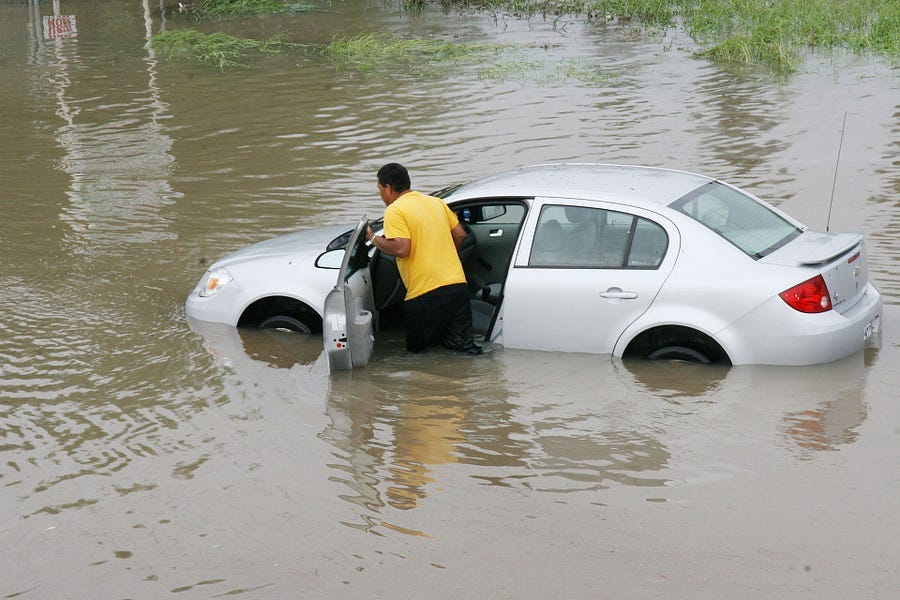
During floods, roads become channels that funnel runoff into fast, powerful currents. The pavement beneath may already be weakened or washed out. Just one foot of water can float many vehicles, lifting them off the road. A small car pushed by moving water quickly becomes uncontrollable. Drivers who think “my tires will hold” underestimate how fast traction disappears. Cars are not anchors — in a foot of floodwater, you lose both control and stability.
Two Feet (60 cm) of Floodwater Can Sweep Away SUVs and Trucks
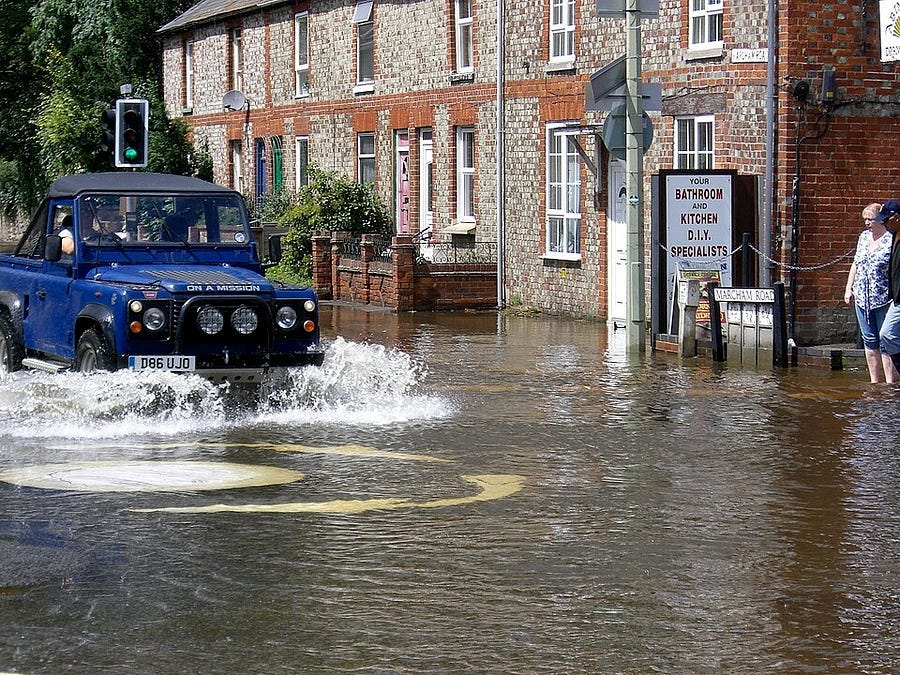
Larger vehicles may seem safer, but once water reaches the undercarriage, their higher profile makes them more buoyant. At 18 inches (1.5 feet) of moving water, SUVs and pickups can be swept off the road. Size doesn’t equal safety — weight and traction offer little defense once buoyancy and current take over.
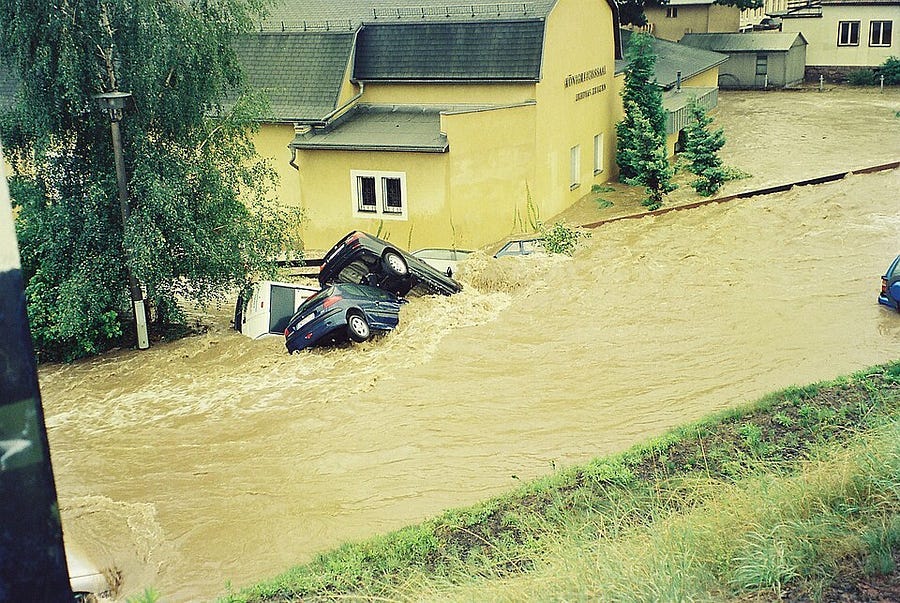
At 24 inches (2 feet), rushing water can carry away virtually all vehicles, including heavy trucks. Strong buoyancy combined with current force makes escape nearly impossible. Even the heaviest vehicles can be rolled, overturned, or pinned against obstacles downstream.
“Turn Around, Don’t Drown” Isn’t a Slogan — It Can Save Your Life
Flash floods and urban flooding create hidden dangers: washed-out pavement, sinkholes, and water contaminated with debris, oil, or sewage. The threat is even greater at night, when it’s almost impossible to judge the depth or condition of the road. Each year, more than half of flood fatalities occur in vehicles — and most are preventable. Too many people underestimate the force of water or drive around barriers, only to be trapped. The safest choice is also the simplest: if you see water across the road, turn back and find another route. The next time you face a flooded street, pause and ask: is this road worth my life — or the lives of those who might come to save me? Share this message — it may save someone you know.
The Bigger Lesson: Respect Water, Save Lives
Flooded streets are more than a traffic nuisance — they’re a reminder that water shapes our built environment. Our cities sit on landscapes that drain imperfectly, and when rainfall exceeds capacity, streets become rivers. The lesson is timeless: resilience begins with respecting geography.
History shows that floods often claim lives not through towering waves, but through ordinary streets made deadly by water. With climate change bringing heavier rains and flash floods, the risks will only grow.
The question is not whether storms will come, but whether we’ll learn to treat flooded roads with the caution they demand. The choice to “Turn Around, Don’t Drown” is not just personal safety — it’s foresight in action.
Disclaimer: The views expressed here are solely my own and do not reflect those of any public agency, employer, or affiliated organization. It empowers readers with objective geographic and planning insights to encourage informed discussion on global and regional issues.

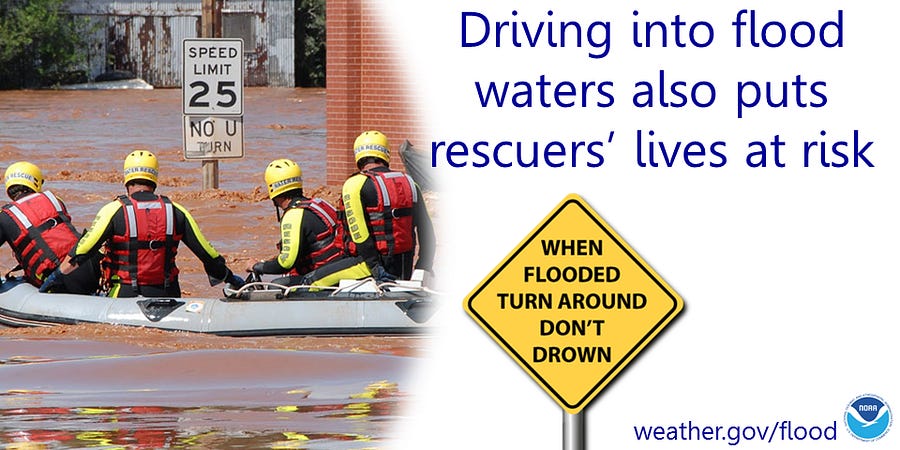

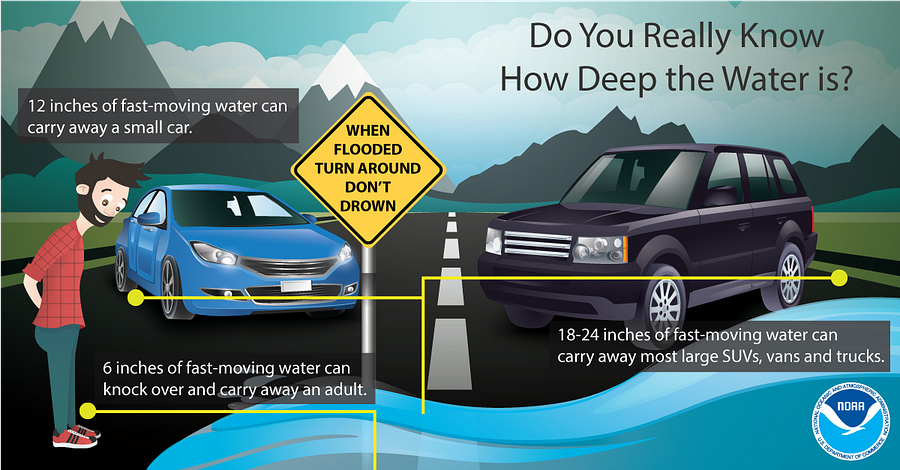
Very interesting, especially for Floridian people